CanSat Leader Training Program -Past, Present and Future-

Rei Kawashima*
It was the end of the 20th century when Prof Robert Twiggs proposed to make a tiny satellite called “CanSat.” He proposed the development of a new satellite that fits in a Soda-can. This soda-can sized satellite was the first small step to open a door to the new world where university students design, build, test, launch and operate satellites in the 21st century.
It should be noticed that CanSat itself has evolved, and that many types of CanSats such as rover type or parafoil type have been developed. In the beginning, a simple CanSat was a challenging project for graduate students in the aerospace engineering field, but now it became a popular tool of hands-on training to learn basic space technology as well, and high school students enjoy developing their CanSat. CanSat is continuously evolving through both ways; challenging more advanced mission and training beginners and new comers.
The motivation of this paper is to explore new possibilities and opportunities for CanSat Leader Training Program (CLTP). In order to explore it, I would like to reflect on the CanSat history.
In this paper, firstly the history of CanSat activities in Japan is introduced; secondly the motivation and achievement of CanSat Leader Training Program (CLTP) are described; thirdly new platforms and tools are introduced, followed by discussion on future possibilities of CLTP.
CANSAT HISTORY IN JAPAN
The first CanSats made by Japanese students were launched in the Black Rock desert in Nevada, USA in September 1999. Figure 1 shows one of the first CanSats built by students of the University of Tokyo.
It was the beginning of the project called “A Rocket Launch for International Student Satellites (ARLISS).” Since then, Japanese students visited the desert and participated in the ARLISS to make suborbital launch experiment every year. Rockets are provided by AEROPAC amateur rocket group. Figure 2 shows some scenes in ARLISS (UNISEC, 2016).
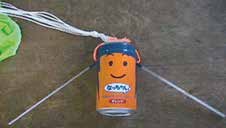
Figure 1. First CanSat built by Japanese students.
In ARLISS, CanSats are released at 4 km altitude on Nevada desert, which is impossible to conduct similar a launch in Japan due to regulations. Each CanSat team designs and builds one or more flight models, and travels to the launch site in Black Rock, Nevada to supervise preparation, launch, telemetry download and safe recovery of their experiments and data (Nakasuka, 2010; ARLISS, 2016).

Figure 2. Scenes in ARLISS.
Nevada to supervise preparation, launch, telemetry download and safe recovery of their experiments and data (Nakasuka, 2010; ARLISS, 2016).
CanSat is an effective educational tool as students can get hands-on experience in the life-cycle of a space project. Also, it is an affordable way to teach students the basics of satellite engineering. Students design and build a small electronic payload that fits in a soda can. The CanSat is then launched and deployed from a rocket or balloon. Using a parachute, the CanSat slowly descends back to Earth, performing its mission while transmitting its telemetry. Post launch and recovery data acquisition allow students to analyze the cause of mission success and/or failure (CLPT7, 2015).
As table 1 shows, the number of participating universities in ARLISS has increased and more teams from different countries participate every year. It should be noted that the Japanese domestic CanSat competitions have been conducted at Noshiro-Space Event since 2005.

In the history of Japanese CanSat activities, two professors’ contributions should be noticed. They are Prof. Shinichi Nakasuka from the University of Tokyo and Prof. Kazuya Yoshida from Tohoku University.
Without their innovative ideas and efforts, CanSat would not have been developed in that way in Japan. The person who made a huge difference in Japanese space engineering education is Prof. Shinichi Nakasuka.
His greatest contribution was to lead students to realize the first CanSat project. In 1998, he did research with Prof. Twiggs at Stanford University, and was fascinated by his idea and motivation that is to make aerospace engineering students experience the whole cycle of a real space project.
Another outstanding contribution made by Prof. Nakasuka was to organize “Comeback competition,” where a machine (a kind of satellite model) with a certain steering mechanism such as parafoil is to, after release in high altitude, come back to a target point autonomously without human interaction, and the one which comes nearest to the target point wins the competition (Kawashima et al., 2004). Through the competitions, CanSat has evolved in many ways; remote rovers, fliers and sophisticated communications both in flight and on the ground.
Prof. Kazuya Yoshida introduced rover to CanSat. He thought that the most effective way to come close to the target point could be rover, and gave students the opportunities to work on the project. The first three years, Tohoku University teams had difficulties, but eventually, they achieved “0 meter to target” with their advanced rover in 2008. Rover type CanSat is shown in Figure 3 (UNISEC, 2016).
ACHIEVEMENT OF CANSAT LEADER TRAINING PROGRAM (CLTP)
UNISEC had focused on domestic activities in the first 10 years since its establishment in 2001 including the preparation period. During these 10 years the experience gained from CanSat programs with Japanese students convinced us that CanSat are important for space engineering education. In 2011, UNISEC started spreading its activities to the rest of the world. A grant from “Funding Program for World-Leading Innovative R&D on Science and Technology” (FIRST Program) enabled UNISEC to spread its mission that is “support, promote and facilitate practical space projects at university level” to other countries.
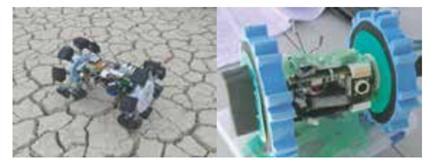
Figure 3 Rover type CanSat (Left: The University of Electro-Communications,
Right: Tohoku University, 2011).
We thought that the most effective way to spread the training program would be to «teach teachers how to teach.» Thus, we invited university professors to participate in CLTP. CanSat Leader Training Program (CLTP).
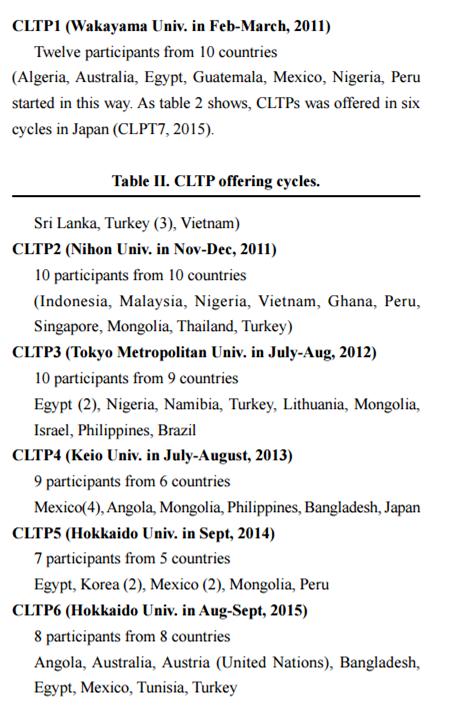
CLTP is a training course for researchers and instructors in one of the capacity-development programs in space technology. The CLTP encompasses the entire cycle of CanSat development, including design, fabrication, testing and launch. Participants are expected to learn space engineering education methods through hands-on training with CanSats and to teach CanSat training methods in their home countries. A CanSat launch experiment using a paper crafted rocket in the fifth and sixth cycles was conducted, as shown in Figure 4. Paper crafted rocket designed and provided by Uematsu Electric Co., Ltd. reduced a launch cost to less than 10% of that employed by used amateur rocket engines.

Figure 4. CanSat Launch Experiment with Paper Craft Rocket made by
Each Participant
NEW TOOLS AND PLATFORMS FOR CANSAT EDUCATION
Through CLTP activities, new tools and platforms have been developed to make the program more effective.
1) i-CanSat
In most university classes, a CanSat is normally developed from scratch. Students need to select components and order them within a given budget. In CLTP, the duration is short and the main goal is that participants learn CanSat development and teaching methods. To achieve this goal a training kit called i-CanSat was developed.
The first prototype of the iCanSat was developed by Prof. Hironori Sahara from Tokyo Metropolitan University, who was in charge of CLTP3. Prof. Shinichi Kimura from Tokyo Science University contributed in developing the Camera unit. It was used in the CLTP4-6. With feedback from instructors, participants and teaching assistants, it has been revised. Figure 5 shows i-CanSat that has just been integrated during CLTP5.
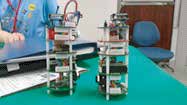
Figure 5. i-CanSat integrated in CLTP5 at Hokkaido University.
2) CanSat Textbook
Prof. Yasuyuki Miyazaki from Nihon University authored a textbook about CanSat in Japanese. Figure 6 shows the cover page of the book. The book was coauthored with professors from other Japanese universities. The textbook was published in 2014 with funding from the Ministry of Education, Culture, Sports, Science and Technology in Japan. It was sold in a market and anybody could purchase it (UNISEC, 2014). This textbook has become vital to the CanSat trainings and activities in Japan. It will be translated into English to share with the Global CanSat Community where the main players are CLTP graduates.

Figure 6. Cansat-Model
nano-Satellite
3) CanSat Mapping Website
CanSat Mapping was developed by Prof. Hidenori Watanabe and his students from the Tokyo Metropolitan University. It was designed to archive CanSats activities worldwide, using Google Earth. Anybody can upload his CanSat documentations with photos and/or movies to the website (UNISEC, 2015). Archiving the CanSat activities in each region would be helpful for the future generations. The lifecycle of students are quite short, and every year new students join. Technology succession is difficult especially hands-on training contains lots of implicit knowledge. With intentional and systematic archiving efforts, new students can learn from the past experiences. Figure 7 shows the CanSat Mapping website.
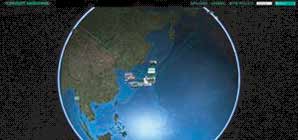
Figure 7. CanSat Mapping website.
FUTURE POSSIBILITIES OF CLTP
So far, we have presented the CanSat activities and CLTP. Before discussing future possibilities of CLTP, let’s consider why CanSat is important as basic space technology education. A comparison between CanSat and CubeSat would be helpful to understand it. As table 3 shows, CanSat and CubeSat have different characteristics and their learning outcomes are different. It is important to look at CanSat education as an introductory phase to a real space project such as CubeSat. Usually CanSat is considered as a very simple project by skilled satellite developers. Such criticism is vague because you can build complex CanSat that can perform complex mission such as the Comeback CanSat. The spectrum of CanSat is broad which makes it a really powerful customized tool that can satisfy different learning outcomes.

CubeSat is a real satellite which is launched into orbit. Even if it is small, it is a real satellite that can influence other satellites. The failure of satellite would contribute to increasing the number of debris. Satellite developers should consider the consequences of their satellite launch. Thus, it would be recommended to launch their satellite after getting enough skills and experiences. In this regards, CanSat education can provide the new satellite developers with the basic hands-on experience.
On the other hand, CanSat does not go to space and its cost is much less expensive. CubeSat requires all arrangements regarding frequency allocation and a launch slot as well as other legal procedures. CanSat allows students and instructors to focus on technical matters only, but CubeSat requires students and instructors not only to do technical matters but also to do a large amount of paperwork.
Now we understood the difference between CanSat and CubeSat, and let’s discuss future possibilities of CLTP from the view point of UNISEC-Global’s vision which state that “By the end of 2020, let’s create a world where university students can participate in practical space projects in more than 100 countries”(UNISEC, 2015; Kawashima, Cho and Ibrahim, 2014).
1) CLTP Localization
CLTP graduates are expected to teach CanSat to their students after going to their home country. So far, graduates are conducting CanSat training to their students and/or teachers in many countries such as Mexico, Egypt Turkey, Ghana, Nigeria, Peru, Mongolia, the Philippines, and Thailand.
They can teach as they like, but it would be better if there are some standards that they can follow. In that sense, CanSat textbook and i-CanSat kit would be one of good tools for localization. If CLTP graduates in each region could translate CanSat textbook into their native language, more people will benefit and enjoy CanSat training with sufficient knowledge. Especially, Spanish and Arabian languages are important because they are spoken in many countries. The i-CanSat kit may require customization to take into account with the availability of electronic components in local markets. So, the developed i-CanSat kit will serve as the baseline and based on it each local CLTP organizer can customize it to fit both the budget and technical requirements. It is important to nurture good instructors whose motivation is high in learning more and sharing their experiences and knowledge for local CLTPs.
2) Expanding the CanSat community
CLTP can be the first step to join the space engineering community. Without prior knowledge in space technology, participants can acquire the basic knowledge in space engineering from CanSat education. Instructors need to continue educating themselves. Once instructors stop improving and learning new things, they will lose the ability to inspire students. Instructors who teach CanSat would be better to have deeper knowledge about satellite because it is necessary to understand in order to explain the functions of each subsystem and component. Thus, affiliation to the CanSat community would force them to continue challenging new things. Localizing CLTP is expected to boost the spreading the CanSat education at higher rate. This in turn will build local CanSat communities. The CanSat communities will expand and interact. Such interaction will be very beneficial to students and the communities at large. Things such as teaching techniques, i-CanSat customization, innovative mission ideas for CanSat, open source firmware and much more can be evolutionized and shared.
CanSat community and CubeSat community would be different because CanSat community will be organized by initiatives of CLTP graduates who are highly motivated to teach others and interested in improving their teaching skills. Thus, the culture of CanSat community could be a little more altruistic. Eventually CanSat participants will join the CubeSat community.
3) Fund raising
Of course, financial resources are always necessary for practical space projects. Even small CanSat cannot be made without financial resources. As a community, fund raising should be discussed and necessary actions should be taken. Recent cloud funding system could be one way. As university does not have much funding, it should be considered how to raise funding from various resources.
CONCLUSION
As we have seen in the previous sections, CanSat activities are effective for education in aerospace engineering field. CanSat Leader Training Program (CLTP) has contributed to making seeds of capacity building worldwide through teaching CanSat training to instructors at university level.
In the future, CLTP will be localized in many regions, sharing the common values, knowledge and technology.
SUMMARY
CanSat activities started in the end of 20th century, and CanSat has continuously evolved because of students. Organizing the Comeback competition accelerated the evolution. After ten-year of CanSat experiences in Japan, CanSat Leader Training Program (CLTP) was launched to provide training opportunities for university instructors motivated in teaching satellite technology at university level. Through CLTPs, new tools and platforms were developed. The next step for CLTP would be localization so that more people will benefit from effective engineering education with hands-on training.
Acknowledgement
CanSat activity has been supported by many generous individuals and organizations. In terms of CLTP, it was supported by a grant from “Funding Program for World-Leading Innovative R&D on Science and Technology” (FIRST Program) where the principal investigator was Prof. Shinichi Nakasuka from the University of Tokyo in 2011-2014.
It is currently supported by the Coordination Funds for Promoting Aerospace Utilizarion, MEXT Japan, which is allocated to the UNISEC research team where the principal investigator is Prof. Yasuyuki Miyazaki from Nihon University.
CLTP 5-7 have been supported by Mr. Tetsuya Iwasaki of Sakura Rubber Co., Ltd.
With lots of generous supports and priceless contributions, CanSat activities have been sustainable.
*University Space Engineering Consortium, UNISEC-Global.
Contacto: kawashima.rei@gmail.com
REFERENCES
ARLISS. (2016). Consultado el 5 de agosto de 2016. http://www. arliss.org/
CLTP7. (2015). The 7th Cansat Leader Training Program. Consultado el 7 de agosto de 2016. http://cltp.info/
Kawashima, R., et al. (2004). Space Education in the 21st Century-»Real» Education Pursued by UNISEC. ISTS 2004-u-04, 24th International Symposium on Space Techonology and Science, Mizaki, Japan, June.
Kawashima, R.; Cho, M., and Ibrahim M. (2014). Challenges and Oportunities of UNISEC-Global. IAC-14-E1.5.10, Toronto, October.
Nakasuka, S. (2010). Evolution from education practical use in University of Tokio’s nano-satellite activities. Acta Astranáutica. 66(7), pp 1099-1105, April.
UNISEC. (2014). Cansat-Model nano-satellite. Japón: Ohmsha.
UNISEC. (2015). Cansat Mapping. Consultado el 8 de agosto de 2016. http://unisec-global.org/
UNISEC. (2016). Consultado el 4 de agosto de 2016. www.unisec.jp
UNISEC. (2016). The Fourth UNISEC-Global Meeting. Consultado el 5 de agosto de 2016. http://www.unisec-global.org/
